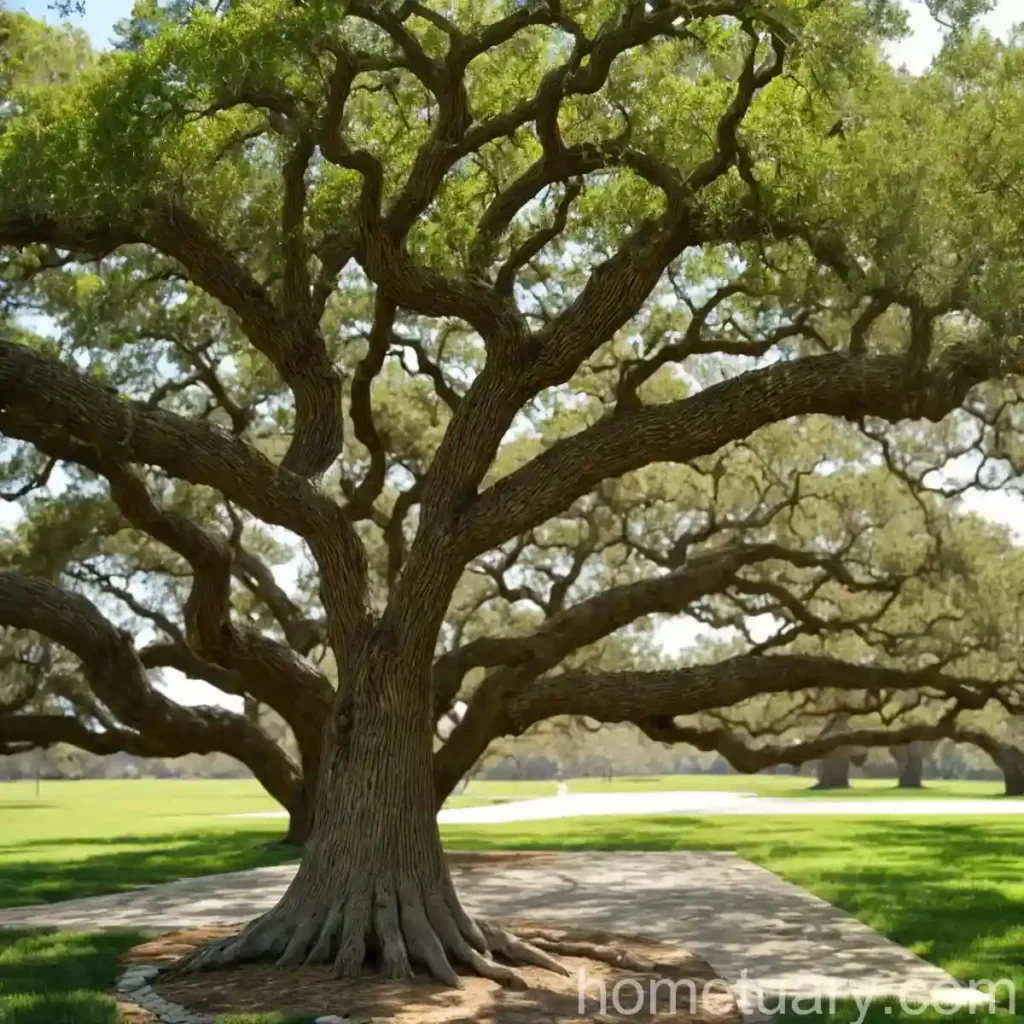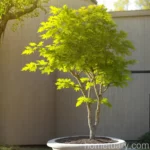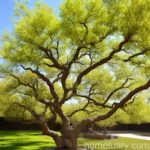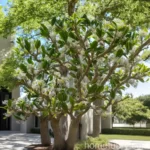The Majestic Live Oak (Quercus virginiana)
As a plant scientist specializing in trees, I am excited to delve into the fascinating world of the Live Oak (Quercus virginiana). This iconic tree has captivated the hearts of many with its grandeur, robustness, and ecological significance. In this comprehensive guide, we will explore the cultural, horticultural, and ecological aspects of the Live Oak, providing valuable insights into its care and importance in landscapes.
What is the Live Oak?
The Live Oak, scientifically known as Quercus virginiana, is a magnificent evergreen oak tree native to the southeastern United States, particularly flourishing in the coastal regions. This stately tree belongs to the beech family, Fagaceae, and is celebrated for its sprawling canopy, strong and sturdy branches, and its association with Southern landscapes and history.
Key Takeaways – Live Oak (Quercus virginiana)
Before we delve deeper into the various aspects of the Live Oak, let’s outline some key takeaways:
- Scientific Name: Quercus virginiana
- Other Common Names: Southern live oak, evergreen oak
- Habitat: Coastal regions, predominantly in the southeastern United States
- Special Features: Majestic stature, dense evergreen foliage, wildlife habitat
- Cultural Significance: Iconic in Southern landscapes, historical symbolism
- Ecological Importance: Erosion control, conservation of biodiversity
- Challenges: Susceptibility to specific diseases and pests
- Care: Drought-tolerant, requires well-drained soil and ample sunlight
Now, let’s explore the various facets of the Live Oak, from its cultural significance to its horticultural care requirements, and the environmental role it plays in the ecosystem.
Culture
The Live Oak holds a revered place in Southern culture, portraying an image of grandeur and resilience. Its sprawling canopy and long, reaching branches have made it an iconic symbol in Southern literature, art, and folklore. This tree has been featured in countless paintings, poems, and stories, each highlighting its enduring appeal and significance.
Uses
The Live Oak has been utilized for various purposes, reflecting its versatile nature and valuable attributes:
-
Shade Tree for Landscaping: Due to its expansive canopy and dense foliage, the Live Oak is often used as a prominent shade tree in parks, gardens, and residential landscapes, providing relief from the scorching sun in the Southern regions.
-
Ornamental Oak Tree: With its stately appearance and evergreen foliage, the Live Oak is a cherished ornamental tree, contributing to the aesthetic beauty of landscapes and providing a picturesque backdrop.
-
Wildlife Habitat: The Live Oak serves as a vital habitat for various bird species, small mammals, and insects, enriching the biodiversity of the ecosystems it inhabits.
-
Historical Symbolism: Its association with historical events and the American South has endowed the Live Oak with symbolic significance, representing strength, endurance, and the enduring spirit of the region.
Environmental Role
The Live Oak plays a crucial role in preserving coastal ecosystems and safeguarding the environment through its remarkable attributes and ecological contributions:
-
Erosion Control: The extensive root system and robust structure of the Live Oak make it an effective tool for erosion control, stabilizing soil along coastlines and riverbanks.
-
Conservation of Biodiversity: The dense canopy of the Live Oak provides a habitat for diverse flora and fauna, supporting the richness of biodiversity in coastal regions.
-
Drought Tolerance: Adapted to the coastal climate, the Live Oak exhibits remarkable resilience to drought, contributing to the sustainability of the ecosystem in arid conditions.
Horticultural Care
Cultivating and caring for the majestic Live Oak requires attention to specific environmental and horticultural factors. From water and sunlight requirements to soil composition and tree maintenance, understanding the needs of the Live Oak is essential for its vitality and longevity.
Water
The water needs of the Live Oak are relatively moderate, and while it is drought-tolerant once established, consistent moisture is essential during the initial stages of growth. Proper watering is crucial to ensure the health and vigor of the tree, especially during dry spells or prolonged periods of heat.
Watering Guidelines:
-
Establishment Period: During the first year after planting, the Live Oak should receive regular watering, ensuring that the soil remains evenly moist but not waterlogged.
-
Mature Trees: Once established, the Live Oak generally requires watering during dry spells, focusing on thorough, deep watering rather than frequent shallow irrigation.
-
Soil Drainage: Ensuring well-drained soil is vital, as waterlogged conditions can lead to root rot and other detrimental effects on the tree’s health.
Sunlight
The Live Oak thrives in full sun to partial shade, displaying its best growth and foliage density under adequate sunlight exposure. Understanding its sunlight requirements is imperative for successful cultivation and optimal performance in landscapes.
Sunlight Recommendations:
-
Full Sun: Plant the Live Oak in a location where it can receive full sun for the majority of the day, promoting robust growth and the development of its characteristic dense canopy.
-
Partial Shade: While the Live Oak prefers full sun, it can tolerate partial shade, especially in regions with intense summer heat, where some protection from midday sun may be beneficial.
Fertilizer
Fertilization of the Live Oak should be approached with care, primarily focusing on enhancing soil nutrition and micronutrient availability. Though the Live Oak is relatively low-maintenance in terms of fertilization, occasional feeding can contribute to its overall health and vitality.
Fertilization Guidelines:
-
Soil Testing: Conduct soil tests to determine the pH levels and nutrient deficiencies, allowing for targeted and precise fertilization.
-
Organic Amendments: Utilize organic matter, such as well-composted manure or compost, to improve soil structure and nutrient content, benefiting the Live Oak’s growth and performance.
-
Balanced Fertilization: If necessary, apply a balanced slow-release fertilizer in early spring to promote new growth and overall vigor, ensuring that it is evenly distributed within the root zone.
Soil
The soil requirements of the Live Oak are critical to its well-being, as they directly influence its root development, nutrient uptake, and overall physiological health. Understanding the optimal soil conditions for the Live Oak is integral to its successful cultivation and long-term sustainability.
Soil Requirements:
-
Well-Drained Soil: The Live Oak thrives in soil that is well-drained, allowing excess moisture to escape to prevent waterlogging, which can lead to root diseases and other issues.
-
Adequate Nourishment: The soil should be rich in organic matter, providing essential nutrients and promoting beneficial soil microorganisms that contribute to the tree’s health.
-
pH Levels: The Live Oak prefers slightly acidic to neutral soil, with a pH range of 6.0 to 7.0, ensuring optimal nutrient availability and root function.
Pruning
Proper pruning is crucial for maintaining the structural integrity and aesthetic appeal of the Live Oak, as well as promoting its overall health and longevity. Pruning techniques should be implemented judiciously, considering the tree’s growth habits and cultural significance.
Pruning Practices:
-
Structural Pruning: Conduct structural pruning during the dormant season to remove dead, diseased, or crossing branches, preserving the tree’s natural form and enhancing its visual appeal.
-
Minimal Intervention: While the Live Oak responds well to pruning, it is essential to adhere to minimal and strategic intervention, avoiding excessive pruning that can compromise its health or disrupt its majestic appearance.
-
Professional Assistance: For significant pruning tasks or intricate shaping of mature trees, engaging the services of arborists or experienced tree care professionals is advisable to ensure proper care and preservation of the Live Oak’s heritage and aesthetic value.
Propagation
Propagation of the Live Oak can be achieved through various methods, including seeds, cuttings, and grafting, allowing for the expansion of its presence in landscapes and conservation efforts aimed at preserving its genetic diversity.
Propagation Techniques:
-
Seed Propagation: Collect acorns from healthy, mature trees and sow them in well-drained, fertile soil in a nursery setting, ensuring consistent moisture and protection from harsh weather conditions until germination occurs.
-
Cutting Propagation: Utilize semi-hardwood or hardwood cuttings taken during the dormant season, treating them with rooting hormones and providing appropriate environmental conditions to induce root development.
-
Grafting: Engage in grafting techniques, such as budding or cleft grafting, to propagate specific cultivars or selected genetic traits, promoting the diversity and resilience of Live Oak populations.
Container Popularity
While the Live Oak is predominantly known for its presence in outdoor landscapes, the popularity of container-grown specimens has been rising, offering opportunities for urban and small-space gardening enthusiasts to incorporate this majestic tree into their surroundings.
Container Cultivation:
-
Selection of Cultivars: Choose container-friendly cultivars that exhibit compact growth habits and are well-suited for confinement, maintaining a harmonious balance between the tree’s vigor and the limitations of container culture.
-
Proper Sizing: Select adequately sized containers to accommodate the vigorous root system of the Live Oak, ensuring sufficient drainage and room for root expansion while avoiding excessive confinement.
-
Careful Monitoring: Regularly assess the moisture levels, nutritional status, and overall health of container-grown Live Oaks, providing appropriate care to sustain their vitality and vigor within the confined environment.
Common Diseases and Disease Diagnosis
The Live Oak, while resilient, can be susceptible to specific diseases that warrant attention for timely identification, management, and prevention. Understanding the common diseases and diagnostic cues is essential for maintaining the health and longevity of the Live Oak in landscapes.
Common Diseases
Some prevalent diseases that can affect the Live Oak include:
-
Powdery Mildew: Manifesting as a white, powdery growth on the foliage, powdery mildew can impact the aesthetic appeal and vitality of the Live Oak, especially in humid conditions.
-
Oak Wilt: A severe vascular disease caused by the fungus Ceratocystis fagacearum, oak wilt can lead to wilting, discoloration, and ultimately, the death of the tree if left unmanaged.
-
Leaf Spot Diseases: Various fungi can cause leaf spot diseases, resulting in the formation of dark, necrotic spots on the leaves, potentially leading to defoliation and reduced vigor.
Disease Diagnosis
Recognizing the symptoms and signs of diseases that afflict the Live Oak is crucial for implementing targeted management strategies and mitigating potential damage to the tree.
Diagnostic Identifiers:
-
Foliage Abnormalities: Monitor the foliage for any discoloration, distortion, or unusual growth patterns, which can indicate the presence of fungal or bacterial pathogens.
-
Vascular Symptoms: Observe the tree for signs of vascular distress, including wilting, cankers, or abnormal sap flow, indicating potential infection by vascular pathogens such as oak wilt.
-
Pathogen Confirmation: Seek professional assistance for accurate diagnosis, including laboratory testing and microbial analysis to confirm the presence of specific pathogens and devise appropriate treatment plans.
Common Pests
In addition to diseases, the Live Oak can also face challenges from pests that seek to exploit its resources or disrupt its vitality. Understanding the common pests and implementing integrated pest management practices is essential for preserving the health and vigor of the Live Oak.
Common Pests
Some notable pests that can affect the Live Oak include:
-
Gall Wasp (belonging to the genus Disholcaspis): These tiny wasps can induce the formation of abnormal growths or galls on Live Oak leaves, affecting their aesthetics and potentially impacting the tree’s overall health.
-
Live Oak Borer (Archipsocus nomas): The larvae of the Live Oak Borer tunnel into the wood of the tree, compromising its structural integrity and leading to potential decline or mortality.
-
Twig Girdler (Oncideres cingulata): This beetle can cause damage to the Live Oak by girdling twigs and branches, impacting the tree’s growth and aesthetic appeal.
Pest Management
Integrated pest management (IPM) strategies can be employed to address pest infestations and mitigate their impact on the Live Oak.
IPM Approaches:
-
Biological Control: Encourage natural predators and parasitoids of the pests, fostering a balanced ecosystem that helps regulate pest populations.
-
Cultural Practices: Implement cultural practices, such as promoting tree vigor through proper care and mulching, which can enhance the Live Oak’s resilience to pest attacks.
-
Selective Treatment: When necessary, employ targeted treatments, such as insecticidal soaps or oils, to address specific pest infestations while minimizing impacts on beneficial organisms and the environment.
Botanist’s Tips
Before we conclude our exploration of the Live Oak, let’s consider some valuable tips from botanists and horticulturists that can aid in the successful cultivation and preservation of this iconic tree:
-
Appreciate Its Heritage: Recognize and appreciate the historical and cultural significance of the Live Oak, embracing its role as a symbol of resilience and enduring beauty in Southern landscapes.
-
Holistic Care: Implement holistic care practices that consider the ecological context of the Live Oak, promoting its vitality while supporting the sustainability of the surrounding ecosystem.
-
Disease Prevention: Prioritize disease prevention through proper cultural practices, ensuring adequate air circulation, moisture management, and overall tree health to reduce susceptibility to pathogens and pests.
-
Expert Consultation: When in doubt about the care or management of the Live Oak, seek the guidance of arborists, botanists, or horticultural professionals with experience in the nuances of caring for these majestic trees.
Fun Facts
To round off our exploration of the Live Oak, let’s delve into some fun and intriguing facts about this remarkable tree:
- The Angel Oak, a Live Oak tree in South Carolina, is estimated to be between 400 and 500 years old, making it one of the oldest living oaks in the United States.
- The Live Oak’s wood is renowned for its strength, durability, and resistance to decay, historically utilized in shipbuilding and construction of iconic structures.
- Live Oaks have been featured in numerous movies and television shows, often representing the grandeur and allure of Southern landscapes.
Links to External Resources
For further information and in-depth resources on the Live Oak, visit the following links:
- USDA Plants Database – Quercus virginiana
- The Cultural and Natural History of Live Oaks
- University of Florida IFAS Extension – Live Oak Production Guide
- The Live Oak Society
- Texas A&M Forest Service – Urban Trees: Live Oak
- International Society of Arboriculture – Live Oak
In Conclusion
The Live Oak, with its deeply rooted symbolism, ecological significance, and majestic presence, stands as a testament to the enduring power and beauty of nature. By understanding its cultural importance, horticultural needs, and environmental contributions, we can foster a deeper appreciation for this remarkable tree and ensure its preservation for generations to come. Whether gracing Southern landscapes or serving as a symbol of strength and resilience, the Live Oak continues to captivate and inspire all who encounter its grandeur.















